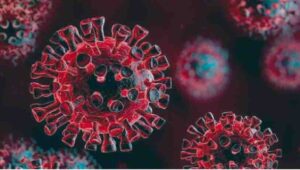Greenwatch Dhaka Desk
Washington, D.C.-In the past decade, approximately 200-300 million people have
been seriously affected by natural disasters or technological accidents each year-a
staggering figure that is bound to only increase in the coming decades. It is becoming
clear that a failure to make political systems pay attention to climate challenges
might lead to massive population displacements. In State of the World 2013: Is Sustainability Still Possible?, the Worldwatch Institute (www.worldwatch.org) discusses the imperative to prepare for such disasters and outlines how we can move forward on the path toward resiliency.
“The repercussions from environmental degradation do not occur in a void,” notes
Michael Renner, contributing author and senior researcher at Worldwatch. “They
interact with a cauldron of pre-existing societal pressures and problems.”
Building up a globalized and industrialized market economy and growing our food
in globe-spanning monocultures may increase efficiency, but such practices also
decrease resiliency. Many societies are now at risk of either short-term or permanent
displacement due to both environmental and non-environmental disasters.
“Of course, disasters of all kinds are nothing new,” remarks Laurie Mazur, contributing
author and nonprofit consultant. “But the current era may be one in which their
frequency, scale, and impact are greater than anything our species has previously
confronted.”
In State of the World 2013, contributing authors discuss an array of strategies
and case studies that offer lessons for surviving and coping with the coming calamities
that may result from climate and other ecological changes.
Recipe for resilience. In order for societies to be truly resilient-able to mitigate
and withstand disturbances and recover afterward-socioeconomic practices should
include redundancies, so that the failure of one component does not impact the entire
system. Modularity is also critical, in that individual units retains some self-sufficiency
when disconnected from the larger networks. Other characteristics of resilient systems
include diversity, inclusiveness, tight feedbacks, and the capacity for innovation.
Adjusting and adapting. We must consider how the physical changes that take place
on Earth will translate into social and economic changes. Adaptation can help reduce
vulnerability by way of disaster and famine early-warning systems, livelihood diversification,
drought-tolerant crops, restoration of ecosystems, flood-defense infrastructure,
and crop insurance.
Cultivating social capital. Social capital, the sum total of resources, knowledge,
and goodwill possessed by everyone in a network, provides a web of connections that
communities can use to obtain relief and reconstruction aid. Members in well-functioning
communities are best able to organize support, articulate their needs, and work
together to rebuild and stabilize.
The Cuban Experiment. Over the past two decades, Cuba has moved to the forefront
of sustainability. In 2006, it was the only country in the world rated as having
achieved “sustainable development” in WWF’s Living Planet Report. Although it is
materialistically poor, it has First World education, literacy, and health care.
The Cuban example proves what many wealthy nations are hesitant to even consider:
that high material consumption does not necessarily equal human well-being. Cuba
represents an alternative where material success as measured by energy consumption
is secondary, while other quality-of-life issues are given priority.
A global paradigm shift is in order. We must not only alter our outlook on consumption
and realign our consciousness with sustainability, but also begin to integrate policies
and practices that diversify and strengthen our social, political, and economic
domains.
Worldwatch’s State of the World 2013, released in April 2013, addresses how “sustainability”
should be measured, how we can attain it, and how we can prepare if we fall short.
For more information, visit www.sustainabilitypossible.org
Authors of mentioned chapters include:
* Paula Green, founder and senior fellow at the Karuna Center for Peacebuilding,
professor at the School of International Training, and author of Chapter 33, “Shaping
Community Responses to Catastrophe.”
* Laurie Mazur, D.C.-based writer and consultant to nonprofit organizations and
author of Chapter 32, “Cultivating Resilience in a Dangerous World.”
* Faith Morgan, executive director of the Arthur Morgan Institute for Community
Solutions and co-author of Chapter 30, “Cuba: Lessons from a Forced Decline.”
* Pat Murphy, research director of the Arthur Morgan Institute for Community Solutions
and co-author of Chapter 30, “Cuba: Lessons from a Forced Decline.”
* Michael Renner, senior researcher at the Worldwatch Institute and author of Chapter
31, “Climate Change and Displacements.” – Worldwatch Institute



